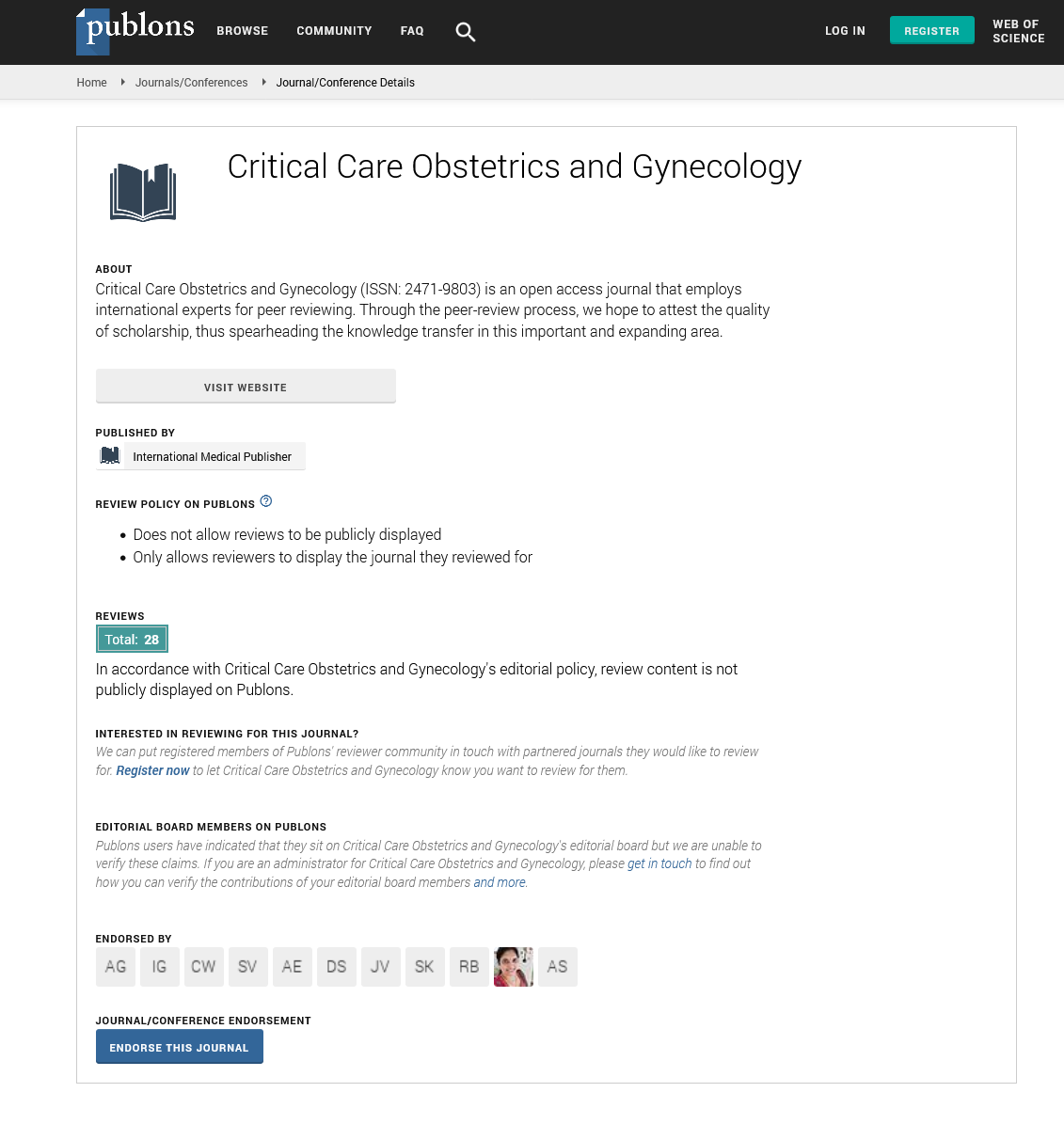Abstract
Prevalence and Determinants of Episiotomy in Saint Paul's Hospital: Cross sectional Survey
Introduction: Episiotomy is one of the most common procedures in obstetrics; defined as perineum enlargement incision during the second stage of labor to increase the diameter of vaginal outlet to facilitate baby birth. Restrictive episiotomy involves performing an episiotomy only when there is an indication. The 2018 WHO episiotomy policy recommend to avoid routine or liberal use of episiotomy for women undergoing spontaneous vaginal birth. However, high prevalence of episiotomy is reported in developing countries and there are limited assessments in the study area.
Methods: Cross sectional study design was employed to assess the prevalence and determinants of episiotomy in St.Paul’s Hospital, Addis Ababa, Ethiopia. The study included all vaginal deliveries from July-June 2016 in the hospital. Medical charts for 344 deliveries in the selected period were reviewed for analysis. Systematic sampling was followed to employ study participants. Data were cleaned and analyzed using the Statistical Package of Social Sciences (SPSS) version 23.0 for Windows. Means, Percentages and Ratios were been calculated and cross tabulation used to compare different variables and subjected to Chi-square analysis to assess various relationships with a significance level of P < 0.05.
Result: A total of 344 women who had a vaginal delivery were included in the study. The age of the women ranges from 18-40 years, with the mean age of 25.53 (SD ± 4.601) years. The prevalence of episiotomy was 41.9%. Binary logistics analysis showed statistically significance relationship between practice of episiotomy with parity (P < 0.001) and place of ANC follow up (P=0.019), with duration of second stage of labour (P=0.001) and weight of the new born (P < 0.001).
Conclusion: The study indicated high prevalence of episiotomy practice compared to the WHO recommended restrictive practice. Guidelines and evaluation of the practice has to be in place to improve the safe practice of episiotomy in the institution.
Author(s):
Bisrat Tamene1, Fanna Adugna Debela2, Fantaye Teka Dinkashe2*
Abstract | PDF
Share this

Google scholar citation report
Citations : 148
Critical Care Obstetrics and Gynecology received 148 citations as per google scholar report
Critical Care Obstetrics and Gynecology peer review process verified at publons
Abstracted/Indexed in
- Google Scholar
- China National Knowledge Infrastructure (CNKI)
- WorldCat
- Publons
- Geneva Foundation for Medical Education and Research
- Secret Search Engine Labs
Open Access Journals
- Aquaculture & Veterinary Science
- Chemistry & Chemical Sciences
- Clinical Sciences
- Engineering
- General Science
- Genetics & Molecular Biology
- Health Care & Nursing
- Immunology & Microbiology
- Materials Science
- Mathematics & Physics
- Medical Sciences
- Neurology & Psychiatry
- Oncology & Cancer Science
- Pharmaceutical Sciences


